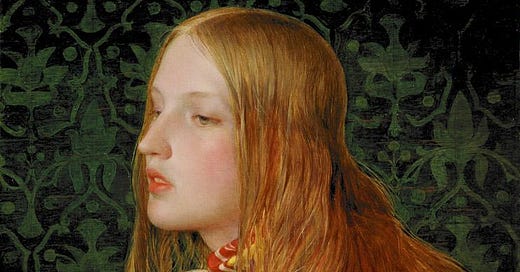Mary Magdalene and Historical Imagination
Recently, I watched a video about one early form of Christianity that is radically different from all versions existing today.1 Those Christians followed the Gospel of Mary.2 According to them, it was Mary Magdalene who had the deepest insight into Jesus' teachings, while the other disciples were lost, confused and jealous (looking at you, Peter). The video essayist, Dr. Justin Sledge, surmised that the author of that gospel3 might have been a woman – or at least a man of a Christianity "where feminine or gender-egalitarian Christian authority was practised"4. Marian Christians lacked any focus on "apocalyptic judgement".5 Furthermore, they did not accept women as the vessel of original sin, they did not accept the idea of salvation by following rules or by the grace of an external saviour. And, importantly, they did not accept Peter as the head of church.6 Instead it was Mary Magdalene, supported by Levi, who was Christ's true heir.
Fast forward 2000 years, and many of the most powerful and (therefore) popular Christendoms are built on the Peterine stream. Why did Peter come out on top?7 Why did more egalitarian Christian communities not win out over a thousand years ago?
Here are some quick guesses:
Egalitarian communities were less violent and therefore more easily overwhelmed by communities that accepted violence as a tool.
The ideas of the Petrine streams were easier to understand, and therefore more memetically viable.
Petrine streams threatened eternal damnation for sinners and heretics. If you buy into this, it is a memetically powerful enhancement. Suddenly it is important to convince everyone you love to join – or else...
Related to this, some egalitarian Christianities supported ideas like "sin" being the state of not having internalized that the soul is detached from worldly conditions. I'm sure most people wouldn't experience any zealous urgency to share upon hearing this. I expect a reaction akin to "Wait, what?"
Petrine streams were more supportive of the patriarchal status quo, and therefore more easily acceptable for men. It is convenient to have "divine sanction" to justify their claim to power.
Related to that, it seems more likely that a woman would end up in a position where she has to accept a man's attachment to the Petrine stream and join herself rather than a man having to convert the Marian stream because of a woman.
A more general version of the previous point, and maybe the most important one – Petrine streams were compatible with existing power structures, justifying and enabling them. Ultimately, that made them a viable option for a Roman state religion.
Since I don't know the answer, I'm curious about historians’ insights and speculations! I want to read up on this and see how accurate my historical imagination is.
that I know of
It is unclear which of the many Maries following Jesus this is. Sledge assumes it's Mary of Magdala and I will do the same.
which I find more appealing than any other Christian gospel btw
A small part of the answer might be a smear campaign. There were efforts to discredit the role of Mary Magdalene by painting her as a prostitute – one of the most disrespected things you could be as a woman at that time. You can read more here: Who framed Mary Magdalene?, Glad You Asked: Was Mary Magdalene a prostitute? This mostly happened in Western Christianity, however. Apparently, this tradition never developed in Eastern Orthodoxy.


